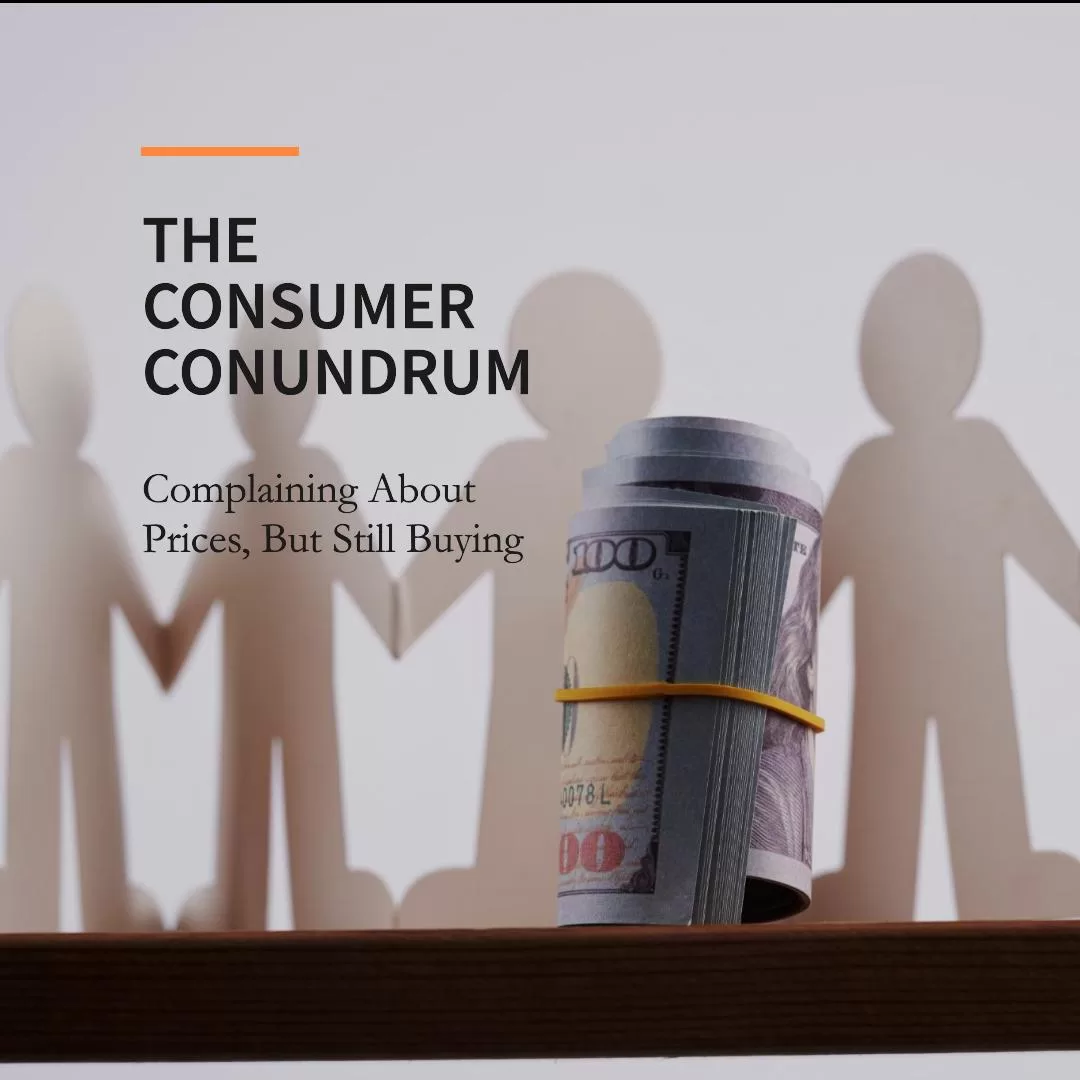In an intriguing economic paradox, consumers across various sectors have been vocal about their dissatisfaction with rising prices, yet their spending habits continue to show resilience. This puzzling phenomenon raises questions about the true impact of price increases on consumer behavior and the underlying factors driving their purchasing decisions. Consumers Complain about Prices Despite Continued Spending.

Amidst a backdrop of inflationary pressures and cost-of-living concerns, consumers have been increasingly vocal about the rising prices of goods and services. Social media platforms, consumer forums, and customer reviews are rife with complaints about the escalating costs of everyday necessities, ranging from groceries and fuel to housing and healthcare. These grievances often echo sentiments of frustration, anxiety, and a sense of financial strain.
However, despite these expressions of discontent, empirical data reveal a contradictory trend: consumers are not significantly scaling back their spending. Retail sales figures, e-commerce transactions, and leisure activities continue to show robust levels of consumption, suggesting that the perceived impact of price hikes on actual purchasing behavior may not be as pronounced as anticipated.
Several factors contribute to this apparent paradox. Firstly, consumers exhibit varying degrees of price sensitivity depending on the nature of the goods or services in question. While some items are considered essential and non-negotiable, others are more discretionary, allowing consumers greater flexibility in adjusting their spending patterns. This segmentation in consumer preferences underscores the nuanced relationship between price perception and purchasing decisions.
Moreover, psychological biases and cognitive heuristics play a pivotal role in shaping consumer behavior. The phenomenon of “anchoring,” whereby individuals use initial price references as benchmarks for subsequent evaluations, can mitigate the perceived severity of price increases. Additionally, the concept of “mental accounting” leads consumers to compartmentalize their budgets, allowing them to justify expenditure in certain categories despite overall budgetary constraints.
Furthermore, the influence of external factors, such as income levels, employment stability, and access to credit, cannot be overlooked. In times of economic uncertainty, consumers may prioritize maintaining their standard of living or hedging against future uncertainties, thereby exhibiting a higher tolerance for price fluctuations.
From a broader economic perspective, the disconnect between consumer complaints and spending behavior underscores the complex interplay between micro-level perceptions and macro-level indicators. While individual grievances may reflect genuine concerns about affordability and purchasing power, aggregate spending data paint a more nuanced picture of consumer sentiment and resilience in the face of economic challenges.
Addressing this paradox requires a multifaceted approach that considers both the structural factors driving price inflation and the psychological mechanisms shaping consumer decision-making. Policymakers, businesses, and financial institutions must adopt strategies that address the root causes of inflation while also fostering consumer confidence and affordability.
In conclusion, the phenomenon of consumers complaining about prices while continuing to spend highlights the intricate dynamics of modern consumption patterns. By understanding the underlying drivers and motivations behind this paradox, stakeholders can develop more effective strategies to navigate evolving economic landscapes and meet the diverse needs of consumers in an increasingly complex market environment.
